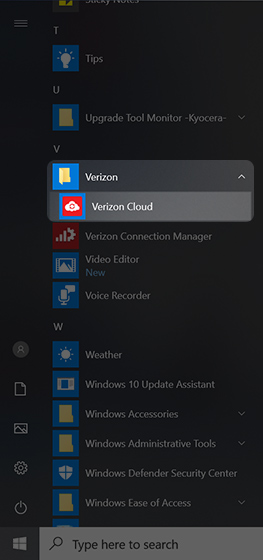

- #Windows 10 start menu location update
- #Windows 10 start menu location windows 10
- #Windows 10 start menu location windows 7
- #Windows 10 start menu location windows
This location is the Windows Task Manager. The Microsoft Windows Start menu is the primary location in Windows to locate your installed programs and find any files or folders. You can only enable or disable those currently inside of the Startup folder. The only difference is that programs cannot be added or removed.


There is one area that enables you to interact with the Startup function, which contains all of the programs found inside of the folder. Attempting to understand why a certain application isn’t opening, or when working with applications that feature user-based licensing or access restrictions will require you know which Startup Folder to configure. Bootable disk Windows 11, 10 and 8 PE - for maintenance of computers, hard disks and partitions, backup and restore disks and partitions, computer diagnostics, data recovery, Windows installation.
#Windows 10 start menu location update
To pin your favorite apps to the Start menu or to the taskbar, select and hold (or right-click) the app you want to pin. Full ISO + Update Patch Only File Size: 4.5/1.1 GB. Then select Folders and choose which folders will appear by toggling each option On or Off. Understanding the distinction between the All Users and Current User Startup Folders is important when it comes to troubleshooting. To adjust which folders show up as icons next to your power button in the Start menu, select Start > Settings > Personalization > Start. Each account will contain a unique Startup Folder in addition to the universal Startup Folder.
#Windows 10 start menu location windows 10
The second one only really matters if you have multiple accounts on your Windows 10 computer. One Windows 10 Startup folder operates at the system level and is shared among all user accounts (All Users folder), while the other operates at a user level and is unique to that user’s account (Current User folder). Clicking on the folder launches the application. Type regedit in the run command prompt and click on the OK button. Start Menu X replaces the yellow folder icons with application icons. For this, open the Run command prompt by pressing the Windows key + R from the keyboard. Open Registry Editor on Windows 11 and 10 devices. There’s a drop-down menu at the very top that will allow you to simply move the Taskbar icons to the very left.When it comes to the Windows 10 Startup folder, it can be found in two different locations. Steps are given below to use the registry editor to clear recent files history on Windows 11 and 10. To move the Taskbar icons to the left-hand corner, enter the Windows 11 Settings menu, then go to Taskbar > Personalization. There’s an easy way to adjust the position of the Windows 11 taskbar icons. is to first backup all of these files to a safe location, delete one of the original files and then check the Jump Lists for all of the pinned programs to. Hi I also like to keep both the Jump Lists and the Recent list on the Start Menu clean.

But you can get around that too, and make Windows 11’s Start menu look as close to Windows 10 as you can get. Home Windows 10 Windows 10 Mobile Previous versions MDOP Surface Surface Hub Library Forums. Of course, this means that the Windows 11 taskbar is still centered, and the Windows 10-style Start menu is oriented to the left. Your Start menu pinned items are in 'userprofileAppDataRoamingMicrosoftInternet ExplorerQuick LaunchUser PinnedStartMenu' I suspect that the problem you are experiencing has wiped the entries from this folder. This database is compiled at first logon using a source XML file that sits in C:UsersDefaultAppDataLocalMicrosoftWindowsShell called DefaultLayouts.xml. And yes, even the Start menu with Live Tiles will have returned. You’ll then need to restart your PC.Īfter you do so, the Start menu will have returned to what it looked like under Windows 10. If you want to switch it back, you’ll need to navigate back through the Registry Editor, and then set that specific value to “0”. You’ll then need to restart your computer. Then right-click that value, select Modify, and set the “Value Data” to 1. C:ProgramDataMicrosoftWindowsStart Menu Step 3: Hit Enter key.
#Windows 10 start menu location windows 7
The picture shows an example of the Windows 7 Start menu. By default, the Start menu is accessed by clicking Start in the bottom-left corner of the Windows desktop screen. Step 2: Then, copy and paste the following location to Run box. probit. The Microsoft Windows Start menu is the primary location in Windows to locate your installed programs and find any files or folders. Once you’ve entered the “Advanced” folder, right-click to create a “New” DWORD (32-bit) Value. Navigate to Windows Start Menu > Computer (in Windows 10, click File Explorer > This PC). Step 1: Press Windows key + R to open Run dialog. Dig into the Registry Editor and create this new entry.


 0 kommentar(er)
0 kommentar(er)
